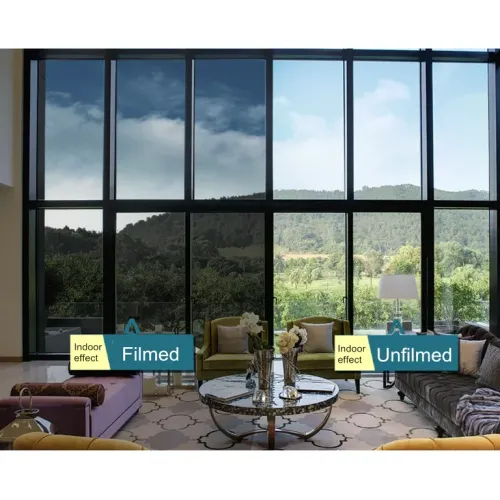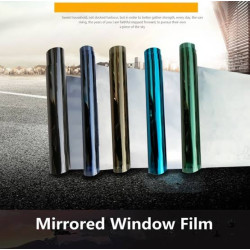Non-reflective window film is a type of solar control film applied to glass that reduces heat, glare, and UV rays without creating a mirror-like, shiny surface.
Unlike reflective (mirror-like) films that bounce sunlight away, non-reflective films absorb and filter light, keeping the glass more natural-looking.
🔹 Key Features
-
Low Reflection: Looks natural from both inside and outside (no mirror effect).
-
UV Protection: Blocks up to 99% of harmful UV rays that cause skin damage and fading of interiors.
-
Heat Reduction: Reduces solar heat gain, keeping interiors cooler.
-
Glare Control: Cuts down brightness, especially helpful in cars or rooms with direct sunlight.
-
Privacy: Provides a slight tint for daytime privacy without a mirrored look.
-
Non-Metallic: Unlike metallic reflective films, it won’t interfere with radio, GPS, or mobile signals.
🔹 Common Uses
-
Automotive: Often used in cars for a sleek, factory-tinted look without high reflection.
-
Residential: Good for homes where you don’t want windows to look like mirrors but still want UV and heat protection.
-
Commercial: Offices that want a neutral, clean appearance without shiny reflections.
🔹 Pros
✅ Natural appearance
✅ No signal interference
✅ Good UV and glare reduction
✅ Safer for visibility at night (less reflective inside)
🔹 Cons
⚠️ Generally less effective at heat rejection compared to reflective/ceramic films
⚠️ May fade faster over time if it’s a basic dyed film (higher-quality ones last longer)
👉 If you want privacy with a mirror-like finish, reflective films are better.
👉 If you want a natural look with comfort and UV protection, non-reflective films are the right choice.


